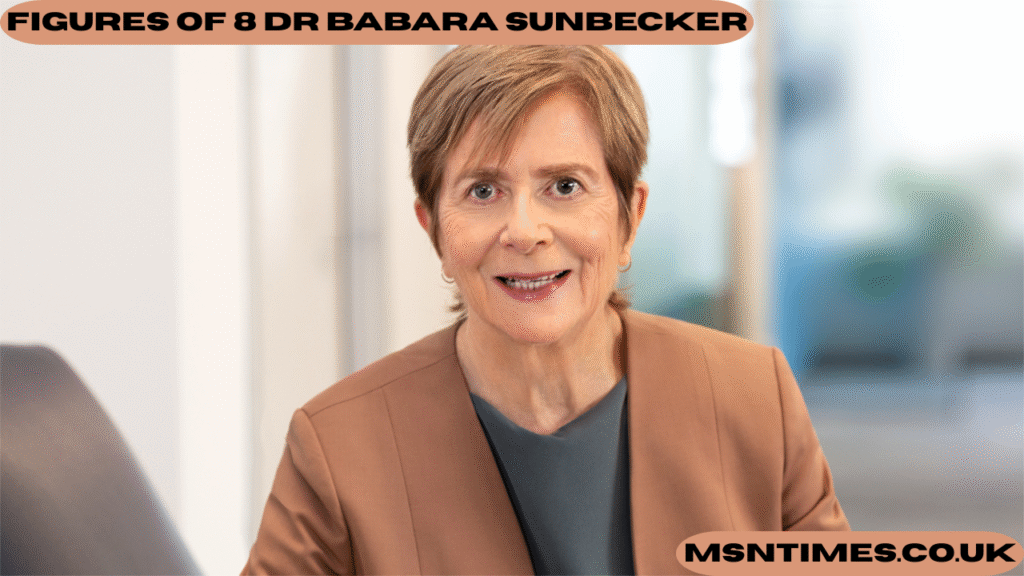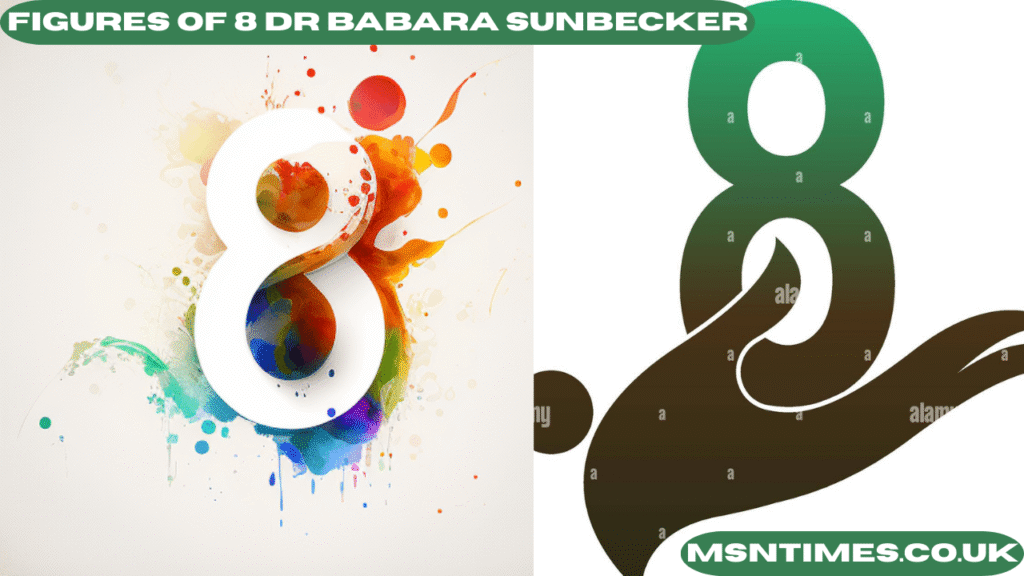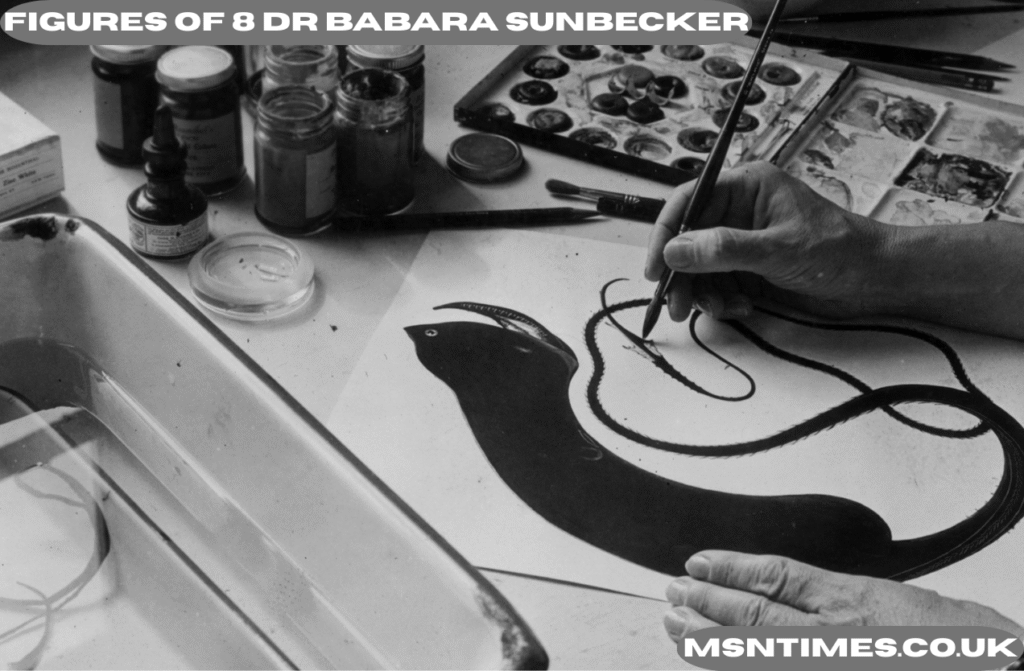The phrase “figures of 8 Dr Babara Sunbecker??” conjures intrigue, symbolism, and perhaps a blend of academic insight and artistic interpretation. While it might sound cryptic at first glance, unpacking its meaning reveals multiple layers—mathematical, philosophical, psychological, and possibly even metaphorical. Who is Dr. Babara Sunbecker? What are “figures of 8”? And why does this combination of terms provoke curiosity? In this detailed exploration, we will delve into each facet, providing clarity on the intersections of thought, movement, and metaphor embedded in the expression “figures of 8 Dr Babara Sunbecker??”.
The Enigma of “Figures of 8”: More Than Just a Pattern
The term figures of 8 often refers to the looping, continuous motion shaped like the number 8. In various disciplines, from mathematics to dance, the figure-eight has deep symbolic and functional meanings.
In mathematics, the figure 8 is most closely associated with the infinity symbol (∞) when tilted horizontally. It represents endlessness, continuity, and boundless potential. In physics, it can describe the path of particles or planetary bodies under specific gravitational influences. In dance or movement therapy, “figures of 8” describe a fluid motion pattern, believed to be therapeutic and symbolic of balance between opposites.
So, when we talk about “figures of 8” in the context of Dr. Babara Sunbecker, we must consider the multidisciplinary reach of the concept. It’s not simply a shape—it’s a philosophy, a technique, and perhaps a window into the deeper layers of human consciousness or bodily movement.
Who is Dr. Babara Sunbecker? Understanding the Name in the Equation

The inclusion of Dr Babara Sunbecker in this phrase suggests an individual—possibly an academic, therapist, artist, or researcher—associated with the study or development of the “figures of 8” idea. While the name may not be immediately familiar in mainstream academic or psychological literature, it holds significance in niche or conceptual spaces.
Could Dr. Sunbecker be an innovator in kinesthetic therapy, someone who teaches movement as a healing art through figure-eight patterns? Or perhaps she’s a fictional or metaphorical figure used to personify the wisdom behind cyclical and infinite thought? Either way, associating a name gives weight to the theory—it gives “figures of 8” a personalized methodology, a signature approach.
Dr. Babara Sunbecker’s name within this phrase may be intentionally provocative—a symbol of feminine intellectualism, holistic movement, or therapeutic discovery. Whether real or representational, her “method” offers a lens through which we view the figure of 8 not only as a concept but as a lifestyle or school of thought.
Symbolism and Psychology of the Figure 8

When diving into the psychological implications of the figure 8, it opens a gateway into Jungian archetypes, balance, duality, and the integration of opposites. The upper and lower loops of the figure can symbolize the conscious and unconscious mind, with the crossover in the middle representing the bridge or transformation point between the two.
From a neurological standpoint, figure-eight eye and hand movements are used in therapy to stimulate cross-lateral brain activity. This can improve focus, memory, and integration between the left and right hemispheres of the brain. Here, the role of someone like Dr. Babara Sunbecker would be critical—guiding individuals through practices that engage the body and mind simultaneously using “figures of 8” as a structural framework.
In child development, educators often incorporate figure-eight tracing to enhance fine motor skills and cognitive synchronization. It is a grounding, rhythmical motion that brings awareness and calm. It is possible that Dr. Sunbecker’s work is—or would be—in this realm, emphasizing the holistic benefits of bodily repetition.
Figures of 8 in Movement and Therapy: The Sunbecker Connection
In somatic practices like yoga, tai chi, and therapeutic dance, movements that mimic the figure 8 are said to restore balance and flow. One loop represents giving, and the other receiving. The motion itself becomes meditative, mirroring breath cycles or emotional waves. If Dr. Babara Sunbecker is a practitioner in this field, her methodology may focus on restoring equilibrium through motion.
Sunbecker’s work, hypothetically, could be based on guiding clients through a “figure of 8 journey” both physically and emotionally. Movements may include arm spirals, hip circles, or even eye-tracking routines—each shaped like an 8, each rooted in intention.
This therapeutic model can also apply to trauma release. Movement shaped as figure-eights helps individuals reconnect to their bodies in safe, repetitive, and symbolic ways. This idea fits seamlessly with modern somatic psychology practices, where healing begins with the physical body before progressing to cognitive layers.
The Metaphysical and Philosophical Depths of “Figures of 8 Dr Babara Sunbecker??”
Adding the “??” to the phrase “figures of 8 Dr Babara Sunbecker” introduces mystery and open-endedness. It asks a question without demanding an answer. Are we being asked to interpret this phrase as a riddle or as a doorway to deeper philosophical exploration?
In metaphysical terms, the figure 8 symbolizes eternal return, karmic cycles, and the interconnectedness of all things. It’s the motion of infinity, looping without beginning or end. When linked to a person—Dr. Babara Sunbecker—it becomes personal. It becomes about individual transformation, how a person interacts with and navigates their own internal loops of life and thought.
Maybe Dr. Sunbecker’s contribution is a framework for living within the 8—understanding the world as constantly shifting, rebalancing, repeating, and evolving. In this sense, “figures of 8 Dr Babara Sunbecker??” is not a static title, but a philosophical prompt, pushing readers to explore dualities: logic and emotion, motion and stillness, order and chaos.
Potential Applications of Figures of 8 Methodologies
Whether grounded in truth or concept, the figures of 8 Dr Babara Sunbecker approach has theoretical applications across multiple fields:
- Education: Teaching figure-eight writing or tracing to children with attention challenges or fine motor delays.
- Therapy: Movement therapy for trauma recovery and stress management.
- Art: Symbolic figure-eight installations or dance choreography inspired by continuous looping motion.
- Philosophy: Using the figure 8 as a representation of non-linear thinking, time loops, or dualities in ethics and decision-making.
- Spirituality: Meditative practices that involve tracing or visualizing figure 8s to foster centeredness and spiritual awakening.
Dr. Sunbecker’s name, real or imagined, grounds these applications in a methodology, giving the reader or practitioner a lens through which to view this wide array of usages.
FAQs on Figures of 8 Dr Babara Sunbecker??
Q: Is Dr. Babara Sunbecker a real individual or a metaphorical figure?
A: The name Dr. Babara Sunbecker may be literal, symbolic, or a constructed identity used to personalize or embody the philosophy of figure-eight dynamics. It allows for diverse interpretations.
Q: What is the main idea behind “figures of 8 Dr Babara Sunbecker”??
A: It likely refers to a symbolic or therapeutic practice involving the figure-eight shape, potentially pioneered or attributed to a figure like Dr. Sunbecker. It emphasizes continuity, healing, and balance.
Q: How can figure-eight motion help in real life?
A: Figure-eight motions are used in therapy to enhance brain-body connection, reduce stress, and support holistic healing. They’re also applied in art, education, and wellness.
Q: What fields could benefit from a figures of 8 Dr Babara Sunbecker approach?
A: Fields like psychology, education, somatics, movement therapy, philosophy, and even art or choreography could find value in such a structured yet fluid framework.
Conclusion: The Legacy of Figures of 8 Dr Babara Sunbecker??
In conclusion, figures of 8 Dr Babara Sunbecker?? is more than a collection of words—it’s a multi-dimensional phrase steeped in meaning. Whether it references a real person, a symbolic thinker, or a fictional guide to movement-based healing, it invites interpretation. It challenges us to explore motion, duality, and endlessness through the figure 8.
ALS READ : Exploring the World of artsusshops.com?? – A Creative Universe for Artists, Makers, and Dreamers
